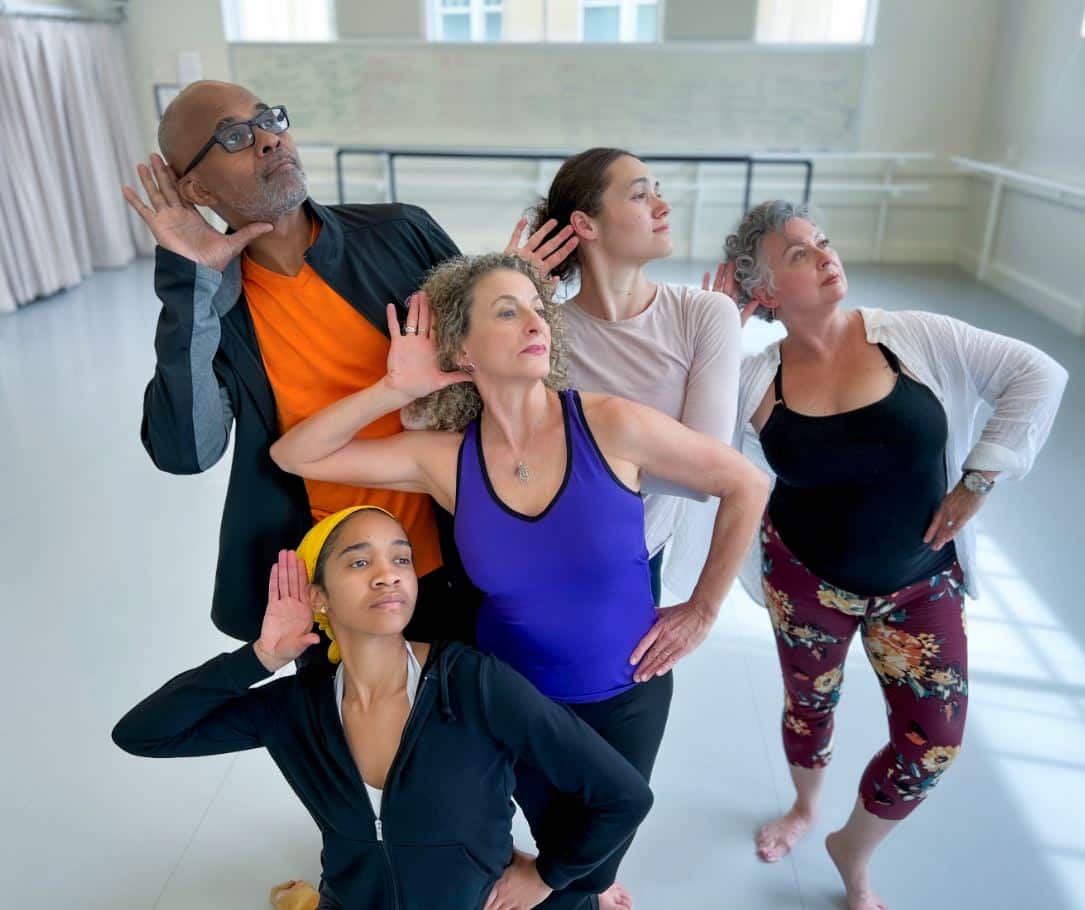
ACTIVISM THROUGH ART: Dance film on the Holocaust inspires reflection, hope and action against hate
By Charlotte Settle
Featured image by Jill Johnson
Performance photos by M. Alimanov Photography
Dr. Suki John, a 64-year-old choreographer and dance professor at Texas Christian University, describes her family’s history as “the oldest story she knows.” Her mother, Dr. Vera John-Steiner, survived the Holocaust.
As a child, John sensed her mother had endured something significant, but more than anything, she remembers her resilience. “My mother’s stories were really about human connection,” John says. “She talked about how people held each other up to get through it.”

More than three decades after first presenting her mother’s story in a choreodrama, Sh’ma: A Story of Survival, John converted Sh’ma to a feature-length film during the COVID-19 pandemic. She previewed it in Fort Worth this year, is working on a New York preview, and is seeking a distributor to organize an official premiere. She also is raising money to edit a shorter version she can take into schools for workshops. Her hope: offer high school and college students, amid modern antisemitism and bigotry, a creative outlet to process identity-based atrocities, past and present.
“There are still genocides going on,” John says. “The more we know about how atrocities happen, the more we can hopefully prevent them in the future.”
John attributes her love for the arts to her mother, an aspiring dancer before the Holocaust. “I danced every time I heard music as a child,” John says. “My mother encouraged me to start studying.” John went on to perform with numerous dance companies in New York and abroad. After an injury, she shifted her focus to choreography.
In 1990, John presented Sh’ma to dance companies in Europe after a trip to Pécs, Hungary, where her father had received an honorary doctorate. She stumbled upon the People’s Theatre in Subotica, which is in Serbia but was part of Yugoslavia at the time. There, she shared a VHS tape of her choreography and walked away with a commission to create an evening-length ballet. She instantly knew she wanted the piece to tell her mother’s story, and it was only fitting to share it through the art form they both loved.

Four months later, John presented Sh’ma: A Story of Survival for the first time. She staged the choreodrama again in New York in 1999.
Told from John-Steiner’s perspective, Sh’ma chronicles her family’s journey through joy, terror, loss, grief, and, ultimately, hope. While John’s choreography addresses the atrocities through raw physicality and emotion, it also emphasizes the power of community through social dance and interpersonal contact.
“We call it a story of survival because we want people to feel empowered,” John says. She chose the work’s Hebrew name for its definition, “listen.”
When John-Steiner was 15, toward the end of World War II, she and her family were deported from Budapest and sent to Bergen-Belsen concentration camp — a site of unspeakable tragedy where approximately 50,000 people, including Anne Frank, perished.
Because her father and uncle were prominent professionals, JohnSteiner and her 13-year-old brother were included in a special transport and released from the camp after six weeks. They were sent to a refugee base in Switzerland, where they searched for their parents on every train that arrived. Miraculously, the family was reunited after the war. A few years later, a colleague of John Steiner’s father sponsored their move to the United States.
After the war, John-Steiner grappled with tremendous survivor’s guilt. She knew she had much greater odds of living than those who were deported earlier in the war. John says her mother “really embraced life after she survived,” never taking her good fortune for granted.
Beth-El Congregation, where John attends temple in Fort Worth, hosted a preview of Sh’ma at the end of its International Holocaust Remembrance Day service, or Yom Hashoah, earlier this year. After the final singing, the congregation watched expectantly as the lights went down and a projector screen at the front of the room lit up. The film opened with a close-up on the strike of a match, and as the camera zoomed out, it revealed John lighting a candle.

Just minutes before, congregation leaders had stepped forward one at a time to light six candles — honoring the 6 million lives lost to the Holocaust.
The opening of Sh’ma continues this ritual of remembrance, setting the scene to pass along a history that must not soon be forgotten.
The first few scenes portray lighthearted moments the family shares before catastrophe strikes. School is out, and the dancers who play John-Steiner and her friends jump, skip and twirl joyfully. The family joins hands around a table in celebration of Shabbat. All is seemingly well, until things take an ominous turn.
